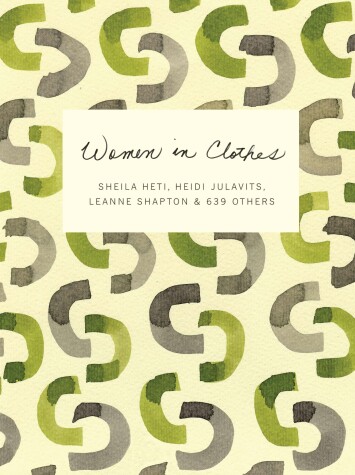Reviewed by clementine on
There was a certain diversity and a certain lack of diversity. I liked that there were women of different cultural backgrounds and that there were several interviews with sweatshop workers. There were lots of different ages presented, as well. I felt that the book was lacking diversity in terms of sexual orientation (there were a few non-straight women featured, but I think there could have been more, and more exploration of what it means to dress outside of a heteronormative context), and most of them seemed to be fairly well-off. And so many of them were writers or other creatives. This makes sense in one way; people who are creative may be more likely to care about their appearance. And the writer types certainly had a lot of very interesting, lucid things to say about their clothes. But I would have liked more everyday women to be featured!
That said, I did still love this. It's a beautiful book. I loved the formatting, the thickness of the paper, the cover design, the visuals. I LOVED that the methodology was laid out. I enjoyed that the three creators' voices were present throughout the book, guiding and shaping it, but that there were so many other women represented. I really loved some of the more provocative content that was included. One of my favourite pieces was by a conservative Muslim woman who was very critical of fashion, makeup, even nail polish. It's not a popular opinion in Western culture and was pretty much opposite to what all of the other featured women wrote about their relationships to clothes, but I'm so glad that this dissenting opinion was included. I don't entirely disagree with it, in fact.
It's a very smart and artistic book - it's not a how-to guide. It's more of a (pop) sociology text. Obviously I love taking things that are seen as frivolous and looking at them in a more serious and intelligent away, treating them as though they are important (because they are!) and examining their roles in everyday life. So I suppose I was predisposed to like this book anyway. Yes, it did have its issues, and yes, some of the features were more interesting than others, but when I look at it as a whole, I just really, really like it.
Reading updates
- Started reading
- 7 September, 2016: Finished reading
- 7 September, 2016: Reviewed
